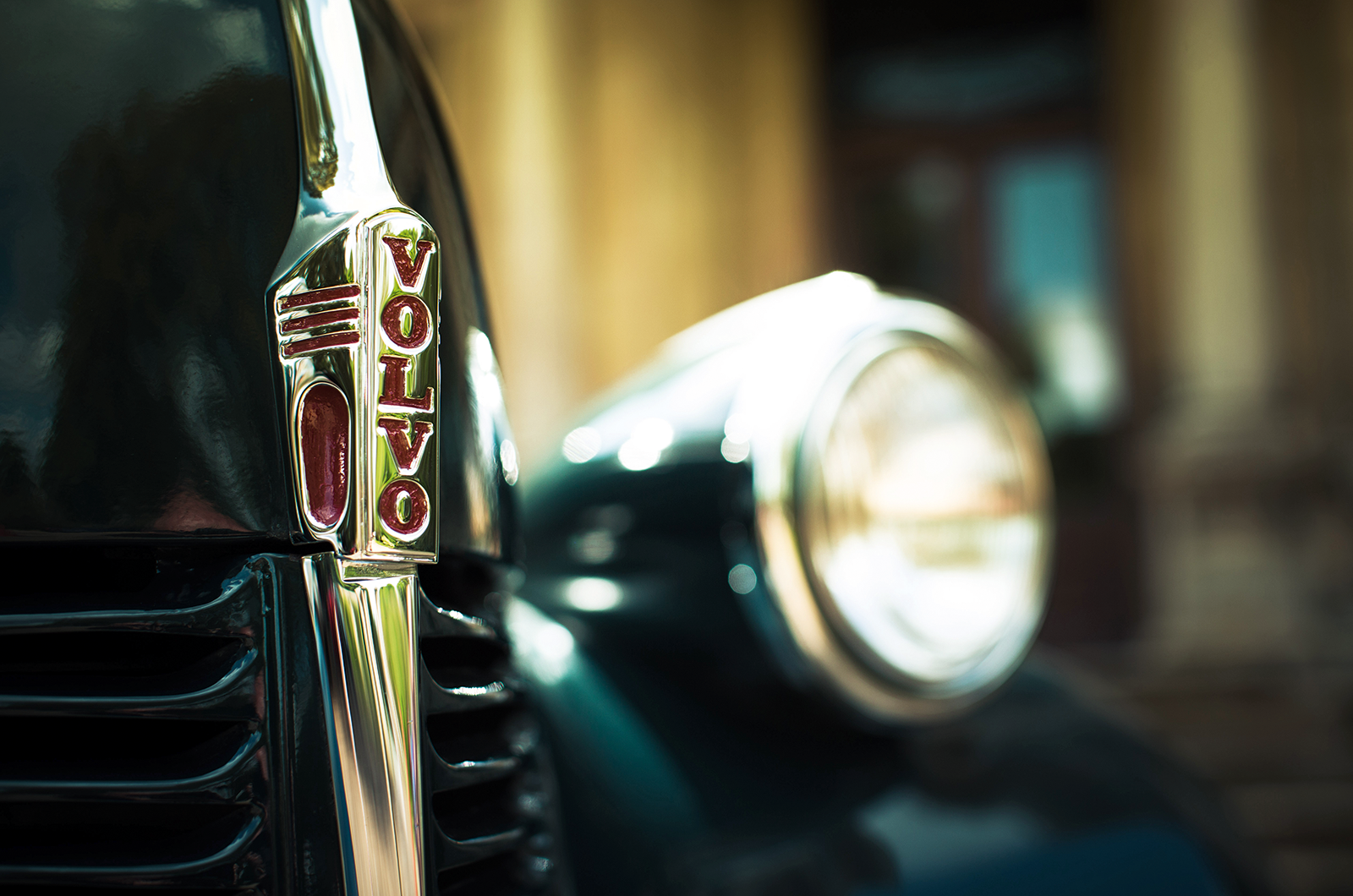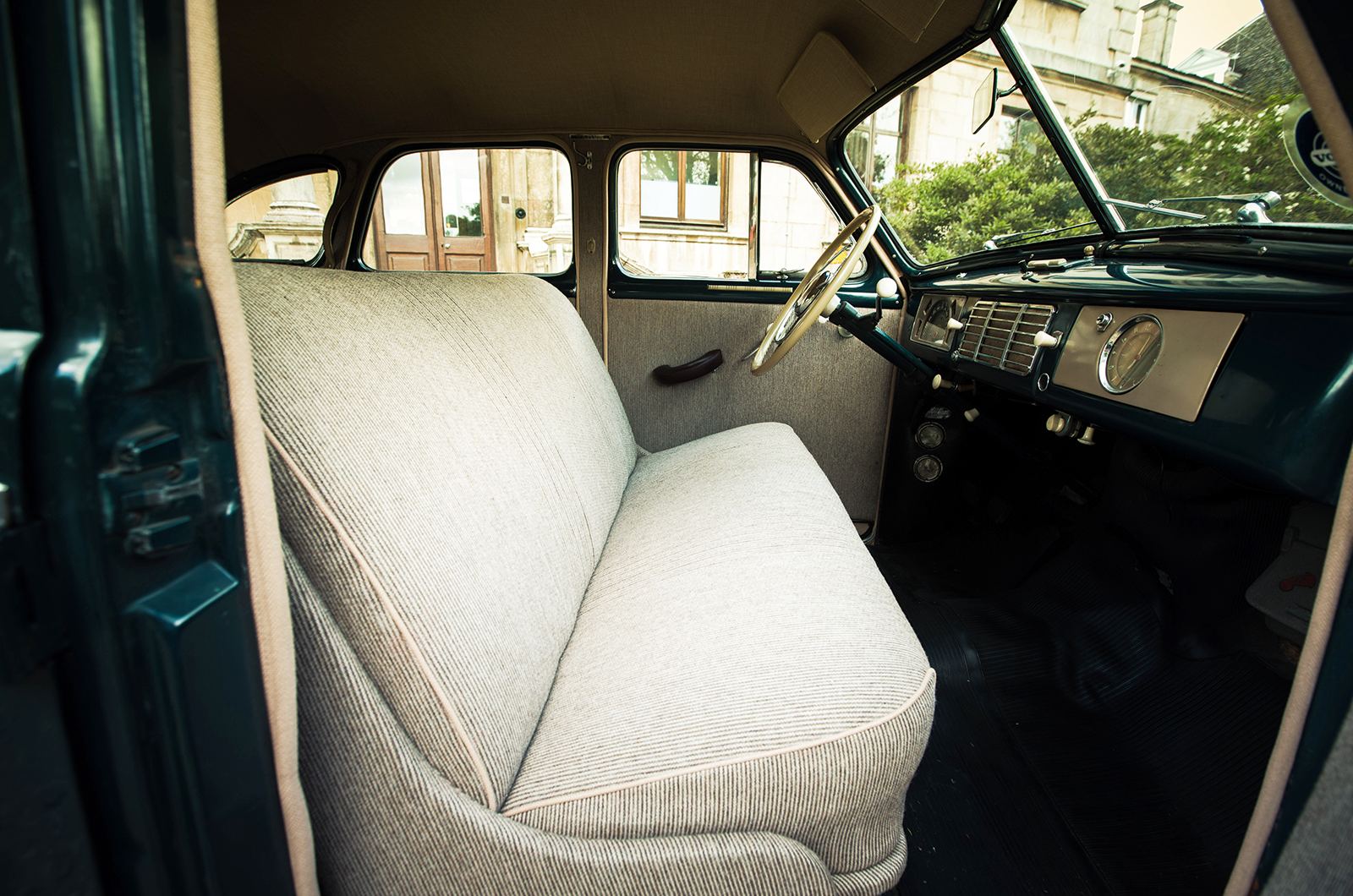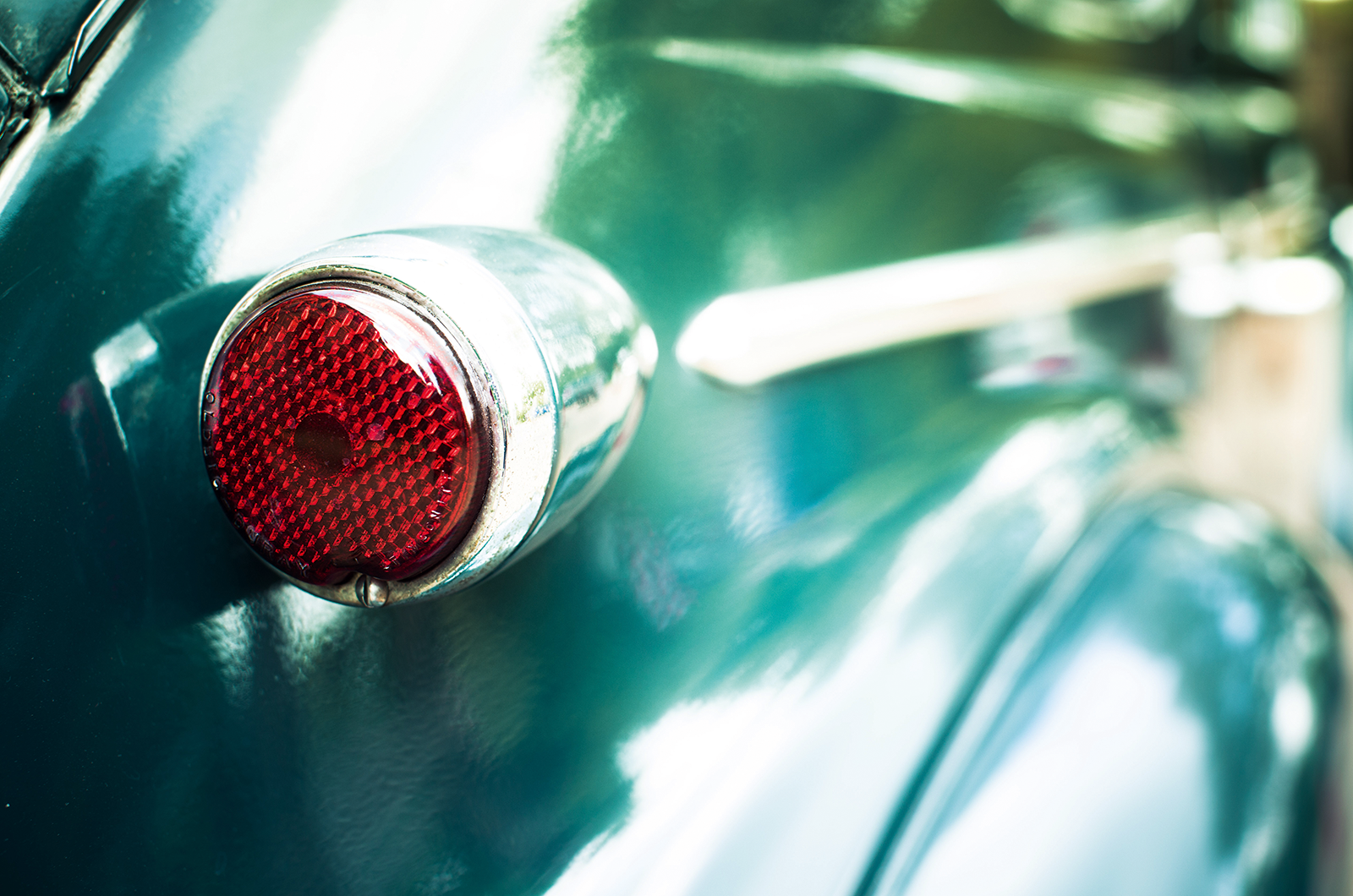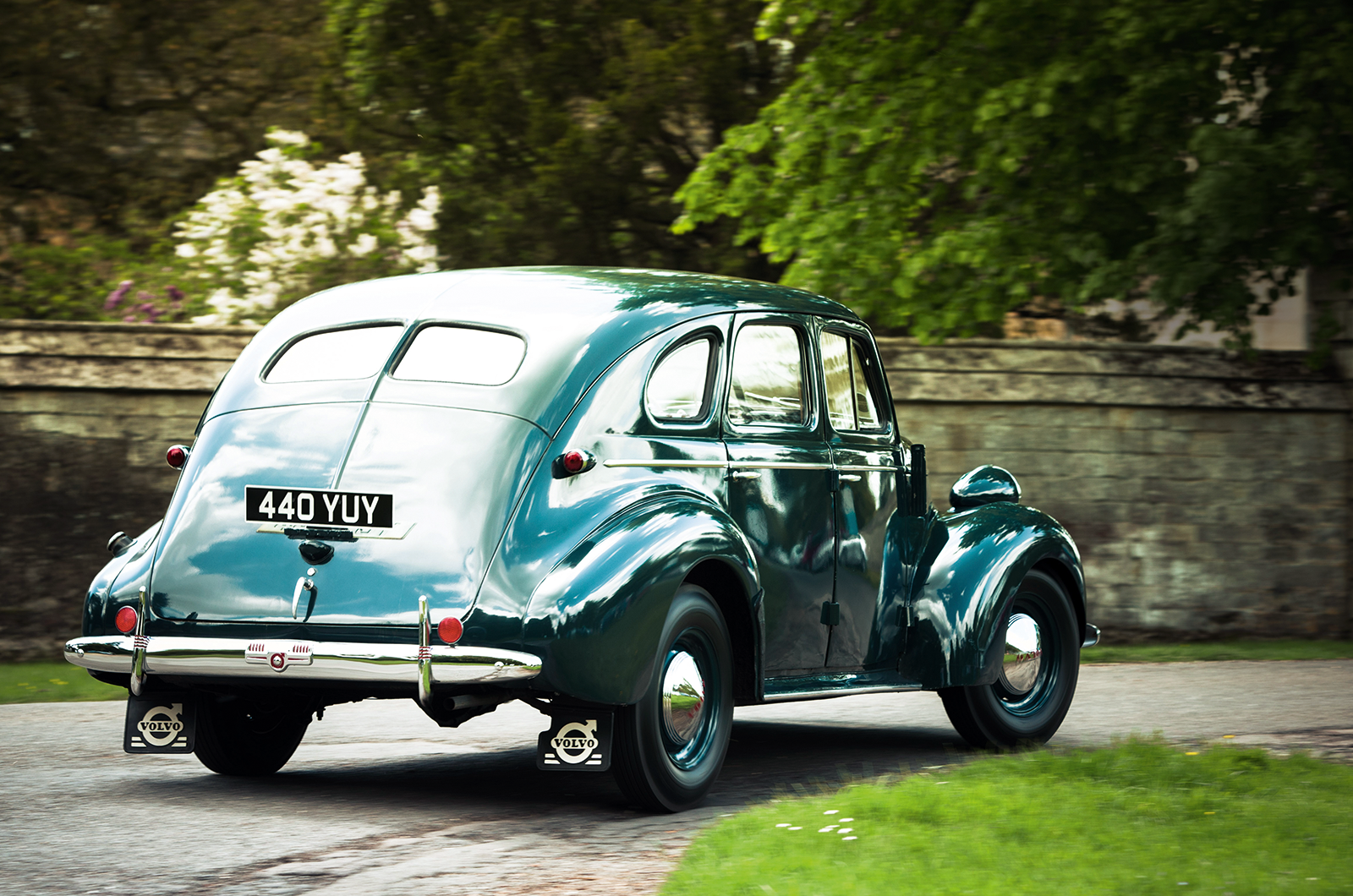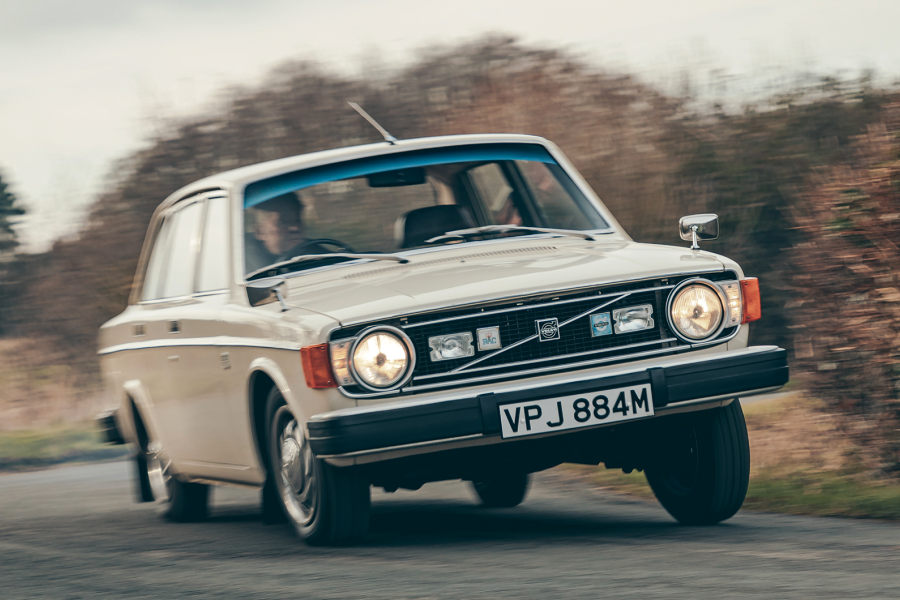
The Volvo PV60 entered life with a birth certificate in one hand and a death warrant in the other.
The logic behind its creation was impeccable. Initiated at the end of the 1930s, the new car was planned for a 1940 introduction.
The aim was to replace the PV53 family of sidevalve ‘sixes’ – the models that, along with the preceding PV51 and PV52, had established Volvo as a small-volume, series-production car manufacturer.
With a more enticing specification, including independent front suspension, there was heady talk of making 5000 PV60s in the model’s first year on sale – a huge hike from the 2000 or so cars sold in 1938.
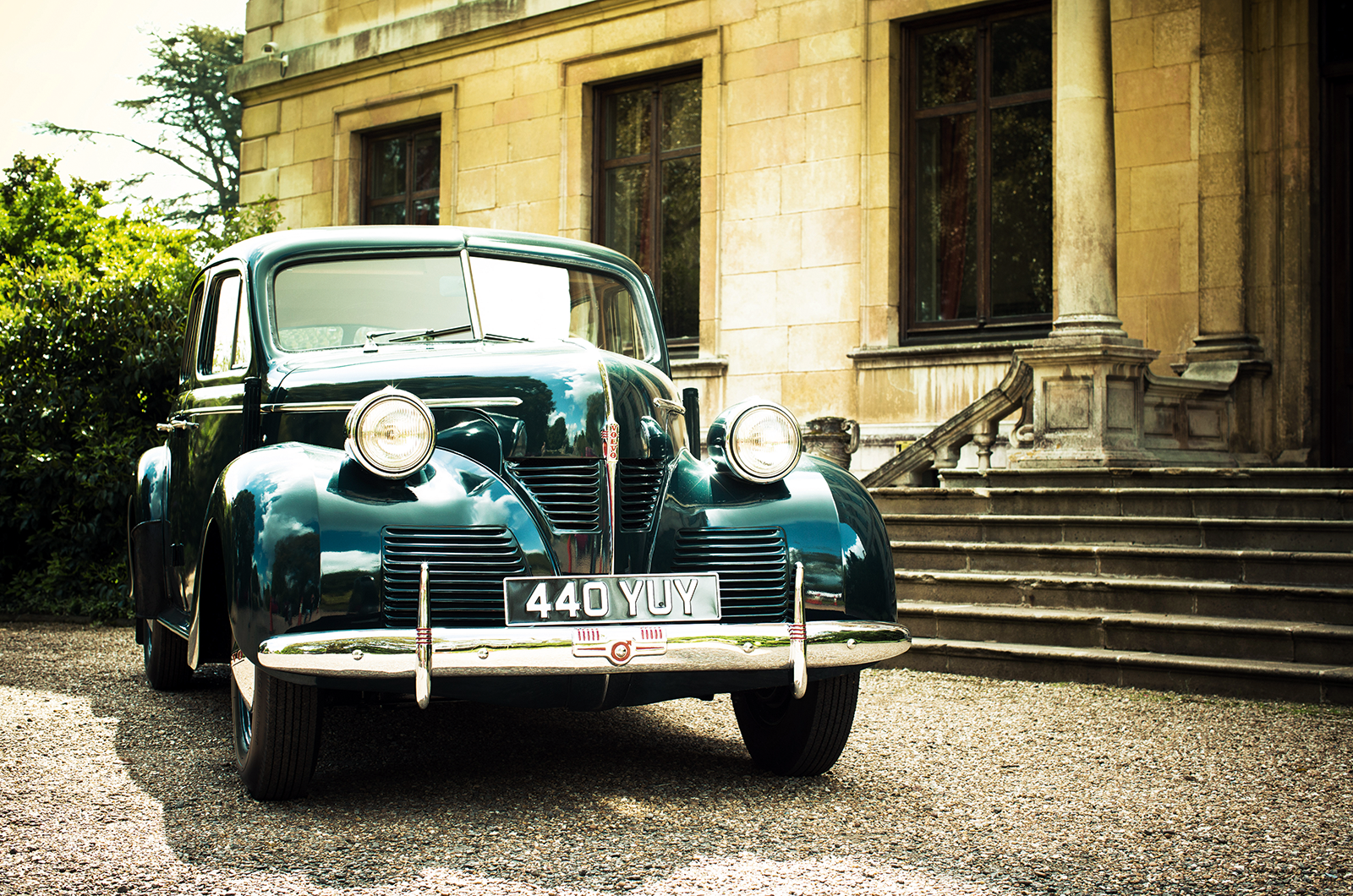
Limited chrome on the Volvo’s prow, wired edges to the front wings signify low-volume build, while the overrider strips are pure ’39 Pontiac
But then WW2 intervened. Sweden being neutral, development was able to continue, and in September 1944 the PV60 was announced.
Alongside the car in the exhibition Volvo gave at Stockholm’s Royal Tennis Court was another new model, however, the pre-production PV444.
In the constrained economic climate of the early post-war years, it was pretty obvious which of the two vehicles would be the breadwinner.

